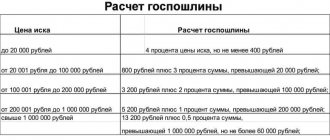You can divide jointly acquired property between spouses voluntarily or through the court by filing a statement of claim for the division of joint property of the spouses.
The division of marital property is a complicated procedure. Both psychologically, emotionally and materially. In itself, drawing up a statement of claim for division of property is not particularly difficult. The main thing is to determine the composition of the joint property and submit claims to the court in a timely manner.
Is it possible to file an application for division of property before a divorce?
The law expressly provides for the possibility of spouses to declare the division of property both during a divorce and after it.
Moreover, in the presence of a number of circumstances (for example, when creditors have claims against one of the spouses), the division of property can be carried out during marriage.
Also, the division of acquired assets before a divorce is possible even when the second spouse creates obstacles in the use and disposal of joint property or is wasteful with assets acquired during the marriage.
The procedure for dividing property before a divorce is similar to the procedure for dividing it both during the dissolution of a marriage and after it.
Grounds for filing a counterclaim when dividing property
The defendant’s right to file a counterclaim in civil cases, including the division of property after divorce, is secured by Art. 137 of the Civil Procedure Code of the Russian Federation.
Important! The main condition for the court to accept a counterclaim is to present it before a decision is made on the main application.
Grounds for filing a counter-statement under the Code of Civil Procedure of the Russian Federation (Article 138):
- The counterclaim was sent to offset the original one. For example, the plaintiff claims property worth 1,000,000 rubles, and the defendant claims property worth 1,500,000 rubles. The court offsets similar claims and orders the plaintiff to pay 500,000 rubles.
- Satisfaction of the counterclaim completely or partially excludes satisfaction of the original claim.
- The original and counterclaims are related. Their mutual consideration will lead to a fairer decision on the division of property acquired during the marriage.
To understand what exactly can serve as the basis for filing a counterclaim, let's look at a few examples. In the general case, we have: the first spouse has already filed an application to the court for the division of property. The second has the right to file his own claim and list his claims in it.
Examples of grounds for filing a counterclaim:
- Exclusion from the general property of things that the defendant received free of charge. Based on paragraph 1 of Art. 36 of the Family Code of the Russian Federation, property received by the defendant on the basis of a gift or inheritance agreement is not subject to division.
- Supplementing the list of divisible property with common property not included in the initial application.
- Invalidation of transactions for the alienation of joint property made without the consent of the defendant in the primary claim (Article 35 of the RF IC).
- Recognition of the plaintiff's personal property as common in cases where the defendant, at his own expense or at the expense of the general family budget, carried out repairs or reconstruction of this property (Article 37 of the RF IC).
- Section of joint debt obligations of spouses (Article 39 of the RF IC).
Note! The defendant has the right to file a counterclaim for division of property even if the plaintiff initially expressed only a demand for divorce.
When to file a counterclaim
The Civil Procedure Code of the Russian Federation (Articles 137, 138) provides citizens with the opportunity to apply to the court with a counterclaim. In cases of division of marital property after divorce, this measure helps the husband or wife protect their rights.
Cases when you can file a counterclaim:
- The claim for divorce was filed without material claims. The second party decides to insist on the division of property.
- The initial claim for division of property does not satisfy the defendant. He files a counterclaim using a different partition scheme.
- The list of divisible property includes indivisible property. The defendant demands to exclude her from the general list.
- The initial claim did not take into account all joint property. The counterclaim adds to the list of divisible property.
Important! If the list of divisible property includes property used for professional activities, this may also become a reason for filing a counterclaim.
When is a claim filed?
The law does not provide clear deadlines for filing a claim for division of property. Spouses may demand division:
- before divorce;
- during a divorce;
- after divorce within the limitation period.
The limitation period for this category of cases is 3 years, common for all civil legal relations, but it will not be counted from the date of divorce, as many lawyers are often mistaken, but from the date when the second spouse learned of the violation of his rights.
Example . If one of the spouses took measures for the voluntary division of property by contacting the former marriage partner and sending him a proposal for division, then the date of refusal to divide will be the beginning of the limitation period.
What to do if your counterclaim is rejected
If we exclude legal and other errors in the preparation of the document, most refusals to accept a counterclaim for the division of jointly acquired property during a divorce are due to the fact that the claims expressed in it are not related to the main claim. It happens less often that the defendant delays in drawing up a counterclaim. What to do in such a situation? Everything is very simple: the interested party rewrites the statement of claim as an independent one and files a lawsuit on a general basis.
Lawyers recommend that divorce and division of property be carried out in different proceedings, based on separate claims. Typically, a judicial divorce occurs within 2-3 months, while the division of property drags on for several months. And if this is one case, the spouses will formally remain as such until all property disputes are resolved. In this case, even buying a new laptop or phone can cause another round of property division.
How to file a claim in court for the division of property during a divorce?
Filing a claim for division of property is carried out in one of three ways:
- By personal delivery of the claim and the entire package of documents to the court and its subsequent transfer to the court reception.
- By sending a package of documents by registered mail via Russian Post or other courier organization.
- By sending documents through a representative vested with rights through a notarized power of attorney.
The most convenient way is to send documents by post. At a personal reception, you can often encounter abuse from court employees.
Which court?
Both magistrates and district courts deal with cases of division of joint property between spouses.
| Where to file a claim for division of property? | |
| To the world court |
|
| To the district court |
|
If the division of common property is combined with a claim within the jurisdiction of the magistrate - for example, for divorce, then the claim in any case will need to be filed in the district court.
Exactly the same rule will be applied if, based on the amount of divisible property (less than 50 thousand), the claim must be filed with a magistrate, but the spouses simultaneously, during a divorce and division of property, resolve a dispute about children within the jurisdiction of the district court.
To exclude the influence of the human factor - not always motivated wishes to finalize the claim from court employees - it is recommended to send a package of documents by mail, having consulted in advance with a lawyer about its compliance with the requirements of the law.
Consideration of the case and execution of the court decision
The court will accept the claim if the plaintiff complies with the above rules for drawing up and submitting documents. Usually a preliminary hearing is held within a month (magistrates have a conversation). Then the main thing, of which there may be several. If there are discrepancies in determining the value of property, a forensic examination may be appointed.
The court may recognize the property acquired by each of the spouses during the period of their separation upon termination of family relations as the property of each of them. In such cases, the evidence will be the testimony of witnesses, the fact of registration at the place of residence in different places, payment of utilities at different addresses, etc.
The defendant may file a counterclaim. For example, include property that was not included in the claim (not included by the plaintiff). Or demand the division of debts and loans during a divorce (and these, as a general rule, are also considered jointly acquired). In objections to the claim or in the claim itself, you can ask the court to deviate from the equality of shares. The arguments here will be:
- interests of minor children,
- if the other spouse did not receive income for unjustified reasons
- the former spouse spent the joint property of the spouses to the detriment of the interests of the family.
The court's decision will come into force one month after it is made. If one of the spouses does not use the right of appeal. After entry into force, spouses must carry out state registration of the transfer of ownership of real estate. And fulfill the requirements of the decision in a claim for division of property after a divorce voluntarily or, using an application to initiate enforcement proceedings, forcibly.
Submission order (step-by-step algorithm)
Filing a claim is a complex of legally significant actions of a certain sequence:
- Drawing up a statement of claim for division of property.
- Collection and preparation of documents.
- Determination of the claim price and payment of the state duty.
- Formation of a package of documents.
- Submitting documents to the court.
- Elimination of deficiencies (if required).
The result of competently drawing up an application and collecting all the necessary documents will be the acceptance of the claim by the court. If there are any deficiencies, the statement of claim will have to be adjusted and submitted again.
Procedure
Compliance with the requirements of Art. Art. 131-132 of the Code of Civil Procedure of the Russian Federation - the main task when preparing and filing a claim for the division of property of spouses.
| No. | Procedure | Comments |
| 1 | Drawing up a claim and collecting documents | Since there are no legal requirements for the content of a claim for division of property, one must be guided by the general rules in Art. 131-132 Code of Civil Procedure of the Russian Federation. Particular attention must be paid to evidence - if any fact or document is mentioned in the claim, it must be attached to the application. |
| 2 | Determining the cost of the claim and calculating the state duty | When determining the price of the claim, it is important to remember that it will be the value of the share of property claimed by the plaintiff, but not the value of the entire property as a whole. The state duty is calculated according to the rules established by Part 1 of Art. 333.19 of the Tax Code of the Russian Federation for property claims. Read more about the procedure for calculating it in the article “State duty for the division of property.” |
| 3 | Formation of a package of documents | Be sure to check out the apps! It is best to submit two complete sets of documents to the court: the original and copies for the defendant. According to the law, the defendant is sent those documents that he does not have, but the court should not be provoked into subjective judgments and enforcement. Just include another packet of copies. |
| 4 | Filing a claim | Send the claim by mail with mandatory receipt of receipt. If you made any mistakes or shortcomings, you will receive an appropriate court ruling indicating all the shortcomings in a list. When submitting your deficiencies in person, you will be pointed out verbally and not always to the point. |
| 5 | Correction of deficiencies | If mistakes or shortcomings are made and you receive a ruling to leave without moving, try to eliminate everything within the period specified by the court. If the determination was received a couple of days before the expiration, submit a request to extend the period, citing the date of actual receipt of the document. |
A fairly simple procedure for filing a claim for division of property in court can result in a lot of problems if the requirements of the law are not observed and there is a generally permissive attitude towards the process of dividing property. Consult with lawyers in advance and reduce the risk of your claim being rejected.
Important! A well-drafted claim is almost half the victory in court. Keep this in mind when drafting your own document!
Questions and answers on the topic
Not all couples who have taken the path of distributing acquired property are familiar with the intricacies of existing family and procedural legislation. As a result, there are unwanted delays in the trial.
In many ways, consultation with specialists can solve the problem. They form their opinion not only with reference to the provisions of the RF IC, but also based on the latest judicial practice.
Here are answers to some questions that consultants have been asked in the past. It is possible that someone will find similarities with their situation.
Personal property
The ex-wife filed a lawsuit for the division of the apartment purchased during marriage, as well as the car. But the car was bought with money saved before starting a family. Tell me what is the best thing to do in this situation?
Vasily, Moscow.
The best option would be to file a counterclaim for division of the car. Its subject will be the exclusion of the vehicle from joint ownership.
At the same time, it is necessary to prove the source of the funds spent on the purchase of the car. A certificate from the bank and other written sources will help.
Calculation of state duty
The ex-wife filed a lawsuit for divorce and division of property. I do not agree with the proposed option and insist on a different scheme. Please tell me how to calculate the amount of state duty in the case of a counterclaim?
Alexey, Moscow.
The application is submitted according to standard rules, including payment of the state fee for the section. It is calculated according to the rules of paragraph 1 of Art. 333.19 Tax Code of the Russian Federation. The base is the value of the disputed property divided by 2.
If the initial statement of claim already indicates the value of the property, you can rely on it. Otherwise, an independent assessment is ordered.
Deviation from equality of shares
The husband filed for divorce. In the lawsuit, he asked to divide the residential building in a ratio of 65 to 35. He argued this by saying that I do not work and only do housework. Are you wondering what the right thing to do in this case?
Zhanna, Balashikha.
To begin with, you should refer to Art. 34 RF IC. Paragraph 3 says that if during the marriage one of the spouses had no income and was engaged exclusively in housework, this does not impair his rights to common property.
We recommend! Division of property of spouses during divorce and after dissolution of marriage
Based on this rule, it makes sense to file a counterclaim for division. Its subject will be the division of the house according to general rules into equal parts.
Permanent use of property
I live in a one-room apartment, purchased with my husband during our marriage. He has his own property. Now the ex-husband has filed a lawsuit for division of real estate. If this happens, I will have to be left homeless. How to get out of this situation?
Elena, Moscow.
Indeed, there are several options. One of them may be filing a counterclaim. In it you can ask to leave the apartment with you. However, in this case, the spouse will have to pay half the cost of housing.
The statement itself emphasizes that the property is used for living, and utility bills are constantly paid for it. A reference to the constitutionally guaranteed right to housing is also suitable.
When to file a counterclaim
The ex-wife filed a lawsuit for division of property. At first, the proposed method suited me. However, life circumstances have changed, and I need the property that my wife wants to keep. Is it possible to replay the situation, since several meetings have already passed?
Timofey, Krasnogorsk.
In accordance with Art. 137 of the Code of Civil Procedure of the Russian Federation, a counter-application can be filed at any time before a decision is made. Therefore, the opportunity has not yet been missed.
It's another matter if you need to justify why changes in position occurred. Arguments are required in favor of the fact that the property needs to be secured. Well, you need to be prepared to pay compensation to the other party.
How to correctly draw up a statement of claim to the court for the division of property
The requirements for the form of the statement of claim, as well as the list of documents attached to the claim, are prescribed in Art. 131 Code of Civil Procedure of the Russian Federation.
A typical claim for the division of marital property acquired during marriage must contain:
- The name of the court in which the claim is filed and its address.
- Names of the parties to the case and their other details: full name, registration and residence addresses, telephone numbers, email.
- Information about the representative (if any).
- The price of the claim and the amount of state duty (according to established practice, it is indicated after the list of parties on the right).
- The circumstances of the dispute that served as prerequisites for the claim: the date of marriage, the period of marriage of the spouses, the composition of the acquired property.
- Arguments and evidence confirming the legal status of joint property (including reference to legislation and practice).
- Reasoned arguments for the proposed property division scheme (for example, why the car should be transferred to the husband, and the non-residential premises should be left to the wife).
- Requirements for division, listed item by item, indicating the value of the property.
- A request to seize property, unless it is filed in a separate petition.
- Date, signature, list of attached documents.
In the claim, you can also write a petition for an independent assessment or a construction and technical examination for, for example, the actual division of a residential building with the determination of possible redevelopment configurations.
But there is no need for this, since the list of questions for the expert will in any case be clarified at the court hearing and formalized by the court’s ruling ordering the examination.
Failure to comply with the requirements listed above will result in the claim being abandoned and further returned if all the court’s comments are not eliminated within the period set by the judge.
That is why it is better to seek help from an experienced lawyer on the issue of drawing up a claim or get a free consultation from the lawyers on our website.
Documents for the claim
- A copy of the applicant's passport.
- Marriage certificate (copy) or divorce certificate (also copy).
- Property documents (certificates of ownership; vehicle registration certificates; purchase receipts, etc.).
- Receipt for payment of state duty.
- A copy of the power of attorney (if a representative will participate in the matter).
- Petition to seize property (if any).
- Other evidence: income certificates; certificates of place of residence, etc.
The list (inventory) of jointly acquired property may be included in a separate annex to the claim if the list is too large.
In addition, the list of joint property can be countersigned by both spouses, thereby confirming the exhaustive list of property subject to division and their agreement with its legal status.
Sample claim for division of common property 2021
Below is an example of a claim for the division of joint property of spouses.
Please note that this document is for informational purposes only, the property in it is indicated as an example, while in real cases everything is much more confusing and complex.
To competently draw up a claim (especially if there is a large amount of property and disputes over its status and division order), it is best to seek help from an experienced lawyer.
You can download a sample claim for editing using the link below.
State duty. Price
The state fee for a claim for division of property is paid in the amounts specified in Art. 333.19 of the Tax Code of the Russian Federation for property claims. That is, based on the value of the property to be divided.
In this case, you need to remember some features of paying the duty:
- The price of the claim, on the basis of which the plaintiff will calculate the state duty, includes only the value of his share in the property. If the object of the dispute is an apartment worth 2 million rubles, then the plaintiff must pay a fee calculated based on the claim price of 1 million rubles - i.e. 50% of the full price of the apartment due to the spouse;
- The defendant also pays a state fee, but based on the results of the consideration of the case and taking into account the value of the property awarded to him;
- If the value of the claim changes during the consideration of the case (including due to a revaluation of the value of the divisible property), the duty is also subject to recalculation. The missing part is paid in addition based on the results of the consideration of the case, and the overpaid part is subject to return.
Thus, when filing a claim, the plaintiff only needs to pay a fee, calculated based on the value of the share in the property required by him.
I ASK THE COURT:
- Recognize the ownership of S.T.I. for apartment 66, building 3, Sukromka Street, Mytishchi;
- Recognize the ownership of S.T.I. for a garage box with an area of 16.7 sq.m., located at Mytishchi, Sukromka St., 3, box 12;
- Recognize the ownership of S.V.Yu. for a plot of land with an area of 20__ sq. m with Cadastral number 69:15:020__01:49 Cadastral value 833040 rubles located at the address: Tver region, Konakovsky district, Kozlovskoye village, Ivanovskoye village, 6.; for a building in the form of a residential building suitable for year-round living, as well as ancillary buildings located on the same site;
- Recognize S.V.Yu's ownership of the following property: MERCEDES-BENZ-260E car, year 20__; RANGEROVERSPORT car manufactured in 2008; Car TOYOTA-LANDCRUISER 20__ year of manufacture; Motor boat 20__ year of manufacture; Motor boat 20__ year of manufacture;
- Recognize the ownership of S.T.I. for a Share in the authorized capital of LLC "F." worth 20__0; share in the authorized capital of LLC "T." worth 500 rubles; share in the authorized capital of CJSC F.” costing 375 rubles;
- Recognize the ownership of S.V.Yu. for a Share in the authorized capital of LLC "K." costing 8400 rubles; share in the authorized capital of CJSC "T." costing 4200 rubles;
- Please notify the legal bureau “Moscow Legal” of the date and time of the court hearing, Moscow, st. Maroseyka, 2/15,
Applications:
- Receipt for payment of state duty;
- A copy of the counterclaim;
- Cadastral extract of a land plot with an area of 20__ square meters. m with Cadastral value of 833,040 rubles located at the address: Tver region, Konakovsky district, Kozlovskoye village, Ivanovskoye village, 6.
- A copy of the certificate of ownership of land dated October 23, 20__ for a land plot with an area of 0.15 hectares located at the address: Tver region, Konakovsky district, Ivanovskoye village.
- Extracts from the unified state register of legal entities in relation to: LLC "F.", LLC "T.", LLC "K.", CJSC "T.", CJSC "F."
- Extract from the Unified State Register of Legal Entities (7 pages) (https://msk-legal.ru)
February 16, 20__________________________________S.T.I.
Limitation of actions
According to the general rule provided for by the Civil Code of the Russian Federation, the statute of limitations is three years from the moment when the party to the dispute learned or should have learned about the violation of its rights. This rule is written down in Part 1 of Article 200 of the Civil Code of the Russian Federation.
The starting point for the three-year period in cases of division of property is considered to be the moment of termination of marriage:
- the date of entry into force of the court decision on divorce;
- the date of entry by the civil registry office in case of extrajudicial divorce.
However, the position of the Supreme Court, reflected in paragraph 19 of the Resolution of the Plenum of November 5, 1998 N 15 (as amended on February 6, 2007), states that the beginning of the limitation period in cases of division of property will be the moment when the party to the dispute learned about the violated right .
Example: The former spouses did not resort to division of property for more than three years from the date of divorce and did not make any demands on each other. Five years later, the ex-wife turned to her husband with a demand to divide the apartment acquired during marriage and was refused, as a result of which she was forced to go to court. It is the moment of refusal (i.e. violation of the right) that will be considered the beginning of the limitation period. When dividing property in a legal marriage, the statute of limitations rule does not apply - the parties have the right to declare the division of property at any time, regardless of the period of marriage.







